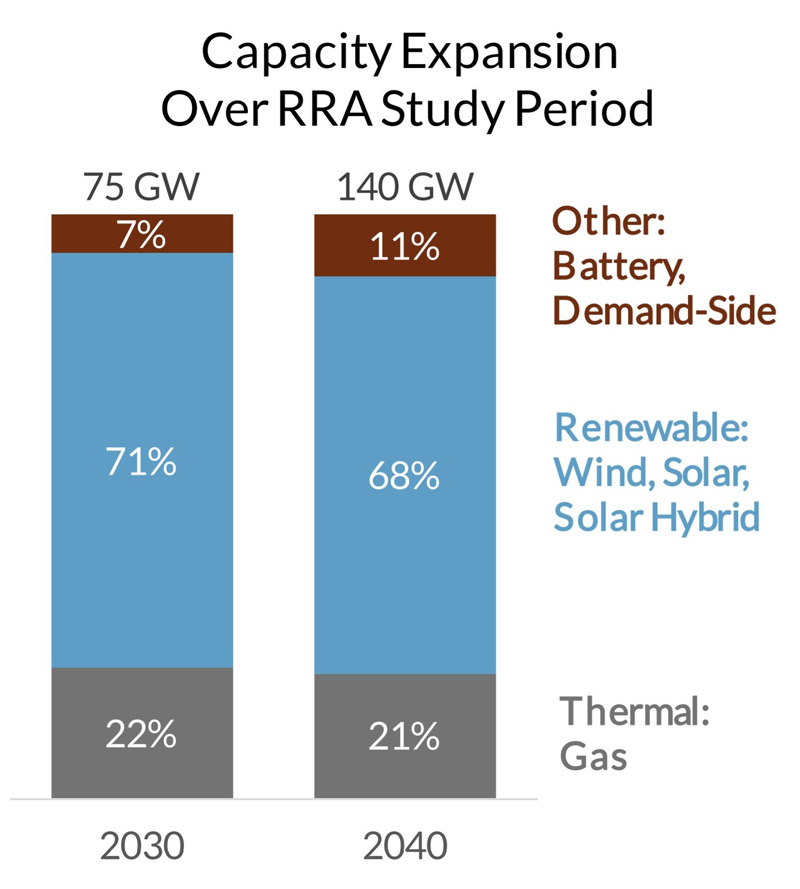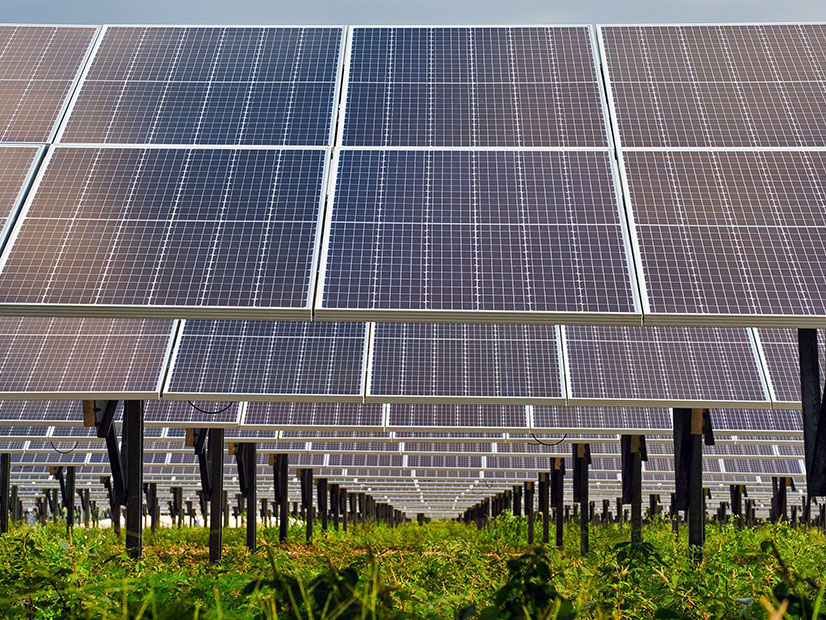MISO said this week that its members will need to nearly double its current 140 GW of generating capacity within the next 20 years to meet state carbon-reduction targets while also maintaining reliability.
The findings come from a draft of the RTO’s first 20-year regional resource assessment, which staff plans to make an annual undertaking.
Broken down, MISO anticipates the necessary 140 GW will consist of 68% wind, solar, and solar and storage combinations; 11% standalone battery storage and demand-side resources; and 21% natural gas and other thermal resources.
The projections would nearly double the 146 GW of total available capacity MISO said it had on hand for this past summer. The RTO said the additions could have renewables supplying 40% of energy while halving current carbon emissions by 2040 on a footprint-wide basis.
By 2030 alone, the grid operator estimates that it will need 75 GW worth of new resources.
 Capacity expansion necessary to meet renewable and decarbonization goals | MISO
Capacity expansion necessary to meet renewable and decarbonization goals | MISO“In 10 years, 20 years, the resource mix is going to look very different,” engineer Aditya Jayam Prabhakar said Wednesday during a workshop to discuss the report. “A lot of renewable resources will be added in the future.”
MISO said that its members’ publicly announced generation plans account for less than half of what’s needed by 2040 to meet load and decarbonization goals.
The grid operator said members’ decarbonization goals can be met through 2034 with their current portfolios and publicly known generation additions. After that, MISO said it’s unclear how members will stick to their goals.
Jayam Prabhakar said many members have 80% or more carbon-reduction goals by 2030.
Some stakeholders have challenged the need for MISO to produce long-term regional resource assessments, saying information contained in the reports could get misused in state dockets to contest utilities’ integrated resource plans. RTO leadership appeared at the Organization of MISO States’ annual meeting to garner support for sharing its resource-planning expectations. (See LSEs, Southern Regulators Pan MISO Resource Assessment, OMS Registers its Concern over Supply Insecurity.)
Jayam Prabhakar said MISO’s findings should not be used in investment decisions or formal proceedings.
“That’s not the purpose or intent of this,” he said. “This is not a plan as to how members should achieve their [emissions] goals.”
The assessment is for stakeholders to “collectively have an idea of what’s going on around us” and maintain reliability, Jayam Prabhakar said. He said the assessment reinforces staff’s recent conclusion that its daily peaks will shift to later in the evening and its system-wide annual peaks will start occurring in winter rather than in summer. (See MISO Wraps 1 Renewable Study, Promises More Research.)
Jayam Prabhakar said the 2022 iteration of the assessment will change as members’ resource plans evolve with more aggressive decarbonization goals. “The changes are coming; the announcements are happening at a rapid pace. … There’s so much change,” he said.
Going forward, MISO will survey its members early in the year to collect future generation data, Jayam Prabhakar said. He said MISO plans to publish an assessment report in the fourth quarter of each year.
MISO said it partnered with Applied Energy Group to scour publicly available data on resource decisions. Next year, staff said they will reach out to members directly to inquire about their resource planning.




